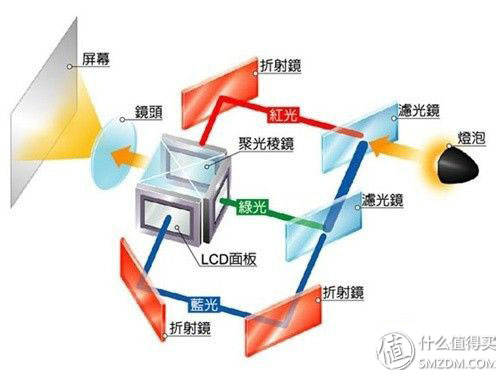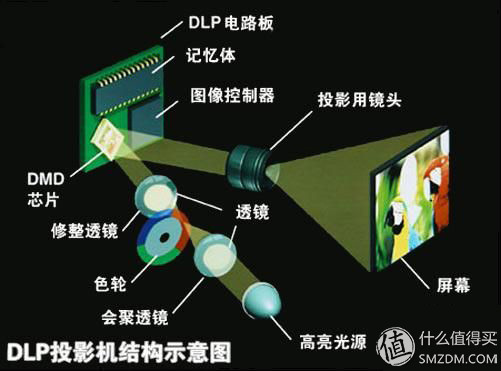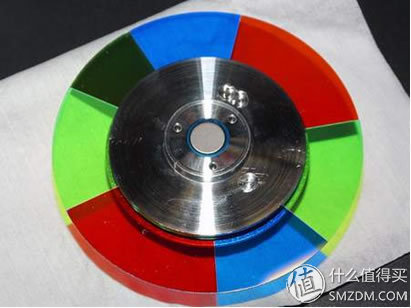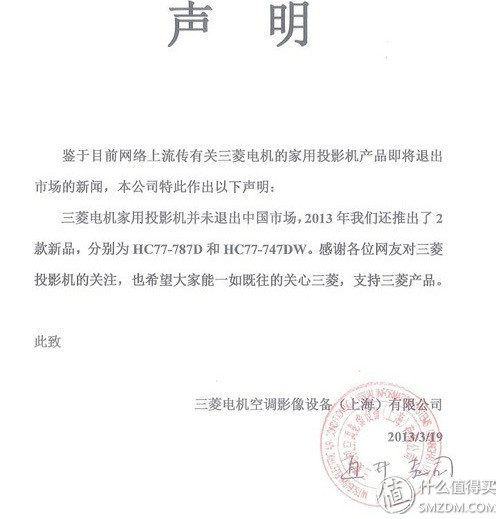Hello everyone, I'm here to fill the pit
Previous experience has been written for a long time. As a late-due patient, it is too lazy. ......
Introduce the technical introduction and selection of mainstream projectors this time
1 mainstream technology 3LCD VS DLP (CRT three guns basically eliminated, it is not introduced, LCOS is too expensive, non-family players skip it)
1.1 Technical Differences:
The 3LCD (Liquid Crystal Display) projector contains three separate LCD glass panels, which are the red, green, and blue components of the video signal. Well, you can imagine that there are three LCD screens that control the three primary colors, and then they are combined into one color screen.

DLP (Digital Light Processing) is a proprietary technology developed by Texas Instruments (TI). It works completely different from LCD. The 3LCD uses a different transmission light path. The DLP chip is a reflected light path and is a reflective surface composed of tens of thousands (or even millions) of microscopic lenses. Each microlens represents a single pixel.

(PS: Cinema DLP projectors, and 3DLP technology, there are three separate DLP chips, each chip corresponding to the red, green and blue channels. However, the vast majority of domestic DLP projectors, only one chip)
Well, now the problem is... excavator technology ... well, the question is how does a DLP chip form a color picture?
- Color wheel

To produce color, you need to use a color wheel that contains at least red, green, and blue filters. This color wheel rotates on the light path between the light bulb and the DLP chip, causing the color of the light projected on the chip to constantly change between red, green, and blue. The microlens reflects light in real time or enters the lens path based on how much each of the three colors of each pixel is needed at a given moment. This behavior modulates the light, producing an image that is projected onto the screen.
(PS: Most color wheels include other color segments than the red, green, and blue filters. Commercial projectors often use a "white" or transparent filter to boost brightness, and many color wheels Filters with colors other than the primary color, such as dark green, cyan, magenta, or yellow.)
 BenQ's golden color wheel technology
BenQ's golden color wheel technology
1.2 Which is the best of 3LCD and DLP?
The answer is simple - neither is better than the other. They all have their own advantages, but also have their own limitations.
DLP advantages:
Sharp imaging: There is no convergence problem because there is only one imaging chip. In short, the monolithic DLP has absolutely nothing to miss. The 3LCD may have a convergence. This is why the often-called DLP is more "sharp."
High contrast: Most commercial/home level DLP projectors have much higher Full On/Off contrast than comparable LCD models. Imagine briefly and you can understand that the DLP is completely off, the LCD off can not completely block the light, more or less some light through, which is why the DLP black is good, good contrast. In the projector industry, ANSI contrast is rarely announced, but tests have shown that DLP projectors often have advantages over LCD competing models in terms of ANSI contrast.
Don't burn screen: In fact, this advantage is not obvious at present. Previous LCD liquid crystal materials have organic molecules. For a long period of time, displaying still images tends to retain a slight residual image of an image. Even after switching to another image, this residual image still exists. . It is usually said that "burning screen", now manufacturers are basically using inorganic liquid crystal panels, compared to organic liquid crystal panels in the life, contrast and other aspects have improved.
The advantages of 3LCD
The color is good: this need not go into details, the people's reflection is that 3LCD color is better than DLP. .
Flexible installation (model with lens shift). Because of the different light paths, 3LCD projectors often have a greater range of vertical and horizontal lens shifts than DLP. This makes them very easy to install in almost any place. In contrast, DLP projectors usually have little or no lens shift. This is inconvenient for installation.
No rainbow effect: The DLP's color wheel produces a rainbow effect. The rainbow effect (sometimes referred to as color-separated image error) is the momentary flicker of a striped color that looks like a rainbow. It appears randomly and only lasts for a moment. However, it is very distracting to those who are sensitive to the rainbow. If you are fully involved in a movie or a TV show, the rainbow effect can completely destroy your enjoyment experience.
However, there are DLP countermeasures, that is, multi-speed and multi-color wheels, ordinary single-speed color wheel is 3600RPM, in some of the new DLP projector products, the color wheel speed doubled, that is 7200RPM. The doubling of the color refresh rate reduces the time between color updates, thereby reducing the visibility of rainbow effects for more people. Further, some projectors use color wheels that contain two sets of red, green, and blue filters. This color wheel still rotates at 7200 RPM, but because the red, green and blue colors are refreshed twice in each rotation instead of once, the industry calls it 4x speed. By similar methods, it is possible to achieve 5, 6 speed color wheels. For most users, the rainbow effect is already very weak for the 5x and 6x speed wheels in most current home theater models.

Q: If the 5 or 6 speed wheels have rainbow eyes, can they still give you more power?
Congratulations to your classmates Seeing your bones is amazing, it's really a martial arts genius. This is where I come to sell you 10 dollars.
. ... 5, 6 speed wheel has a rainbow eye really no way, just want some people to play CS dizziness, this solution
Only buy 3LCD machines.
2, model recommended
In the spirit of what it is worth to buy, several models are recommended, many of which are frequent flyers of SMZDM (the most recent link in time is the recent price):
(Note: The recommended ones are relatively easy to buy through e-commerce or sea scouring. Even if a certain treasure is used, the official turnaround may not be available. Therefore, such as: EPSON EH-TW3850C, 3300C; Mitsubishi HC77-11S; Optoma HD21, etc. If you are interested, you can check it out and do not repeat it here.)
Less than 6000 worth buying models
1. EPSON EH-TW5200
Advantages: 3LCD, short focus, 3D, quality control better than Taiwan, high brightness 2000 lumens, quality control is better than BENQ
Disadvantages: No lens shift, black level (3LCD common problem)
2, BENQ W1070
Advantages: DLP, short focus, 3D, ISF certified, strong tuning features, 6-segment RGB color wheel,
Disadvantages: the lens is easy to get into the gray (the forum some people pretend to be UV mirror anti-ash), the noise is slightly larger, according to the person who bought the quality control in general,
3, ACER H6510BD
Advantages: 3D, brighter than W1070, longer lamp life, brighter colors in DLP, with 2D to 3D function;
Disadvantages: black level, 6-color wheel easy rainbow eyes.
10,000 worth of models purchased
1, EPSON EH-TW3850C
Advantages: The lens has a large horizontal and vertical displacement (horizontal displacement can be projected in the range of nearly 2 screen widths. The vertical lens movement function can be projected in the range of nearly 3 screen heights), and installation is very convenient.
Disadvantages: Without 3D
3, Mitsubishi Mitsubishi HC7900DW
Advantages: DLP, 3D, medium focal, black, good 3D effect.
Disadvantages: slightly lower brightness, 1500 lumens
These recommended models are mainly the ones I studied when I purchased the projector. They are for reference only. Sometimes the reviews are more recommended. .
FAQ
Q: It is said that Mitsubishi has withdrawn from the home projector market. What will happen if the accessories are not ready for purchase?
A: Who said?

Q: How can I know if I have any rainbow eyes?
A: There is no other way but to actually look at it
Q: Why is there no LCOS model recommendation?
A: I have said before, you are... (And it's better to do SONY only)
Q: How do you feel when you use your own landlord?
A: The previous experience has sunburned. The Japanese buy the EPSON EH-TW5200. Feeling: Affordable, enough
==== Introduction is complete, thank you for viewing ====
Additional changes (2014-11-08):
Added: Regarding Mitsubishi's exit from the projection market, the search did not find news on the official website. The news that can be found is basically from projectorcentral.com. "Mitsubishi Closes Projector Division
Evan Powell — Oct 11, 2013
Mitsubishi announced today that it is terminating the manufacture and sale of digital projectors...
The company is committed to full maintenance and warranty support of all units currently installed. Projector inventory that is currently in the distribution channels will continue to be sold with full warranty support.
This is sorry news. Mitsubishi has been a premium designer and manufacturer of both LCD and DLP projectors for many years. We have had the opportunity to develop good friendships with some great people there. We are saddened at the news of their departure from the industry. , and we wish everyone at Mitsubishi who is affected by this shutdown the best of luck in their next ventures.
Evan Powell
Editorâ€
The effect is to exit the projector market, but will also maintain after-sales service.
At present, there are pages of projectors and after-sales service pages on the official website.